20 Types of Flowers & Plants That Attract Ladybugs (with Pictures)
-
Visnja Radosavljevic
- Last updated:

Ladybugs are amazing insects that are extremely beneficial for your garden. They are excellent additions in fighting pests and diseases, as they feed on many plant-eating insects. To attract ladybugs, you need to grow suitable plants that will allure them to your garden.
But which plants attract ladybugs?
Keep reading and check out our list of 20 flowers & plants that attract ladybugs. We’ll list various flowers, fruits, and vegetables, so once you know more about them, you can choose a suitable option for your garden.
The 20 Types of Flowers & Plants That Attract Ladybugs
1. Geranium
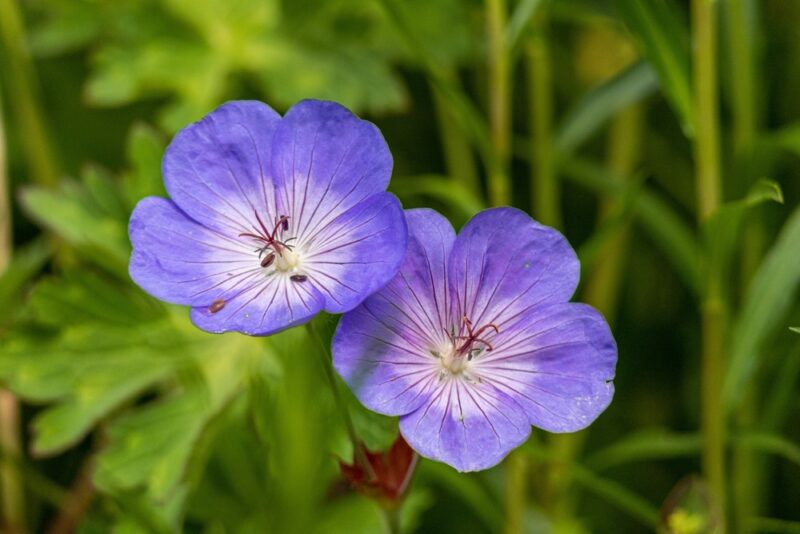
| USDA Hardiness Region: | 3–9 |
| Sun: | Full sun |
| Soil: | Loose, rich in organic matter |
Geranium is a classic annual plant you can notice in gardens throughout the world. This plant is recognizable by its beautiful flowers that range in colors from pink and red to orange and white. Geraniums prosper in full sun and prefer loose soil, rich in organic matter. They are compact in size and can only reach a height of about 12 inches. However, you shouldn’t let their small size fool you; geraniums are sturdy plants.
They are drought tolerant and attract positive insects like ladybugs and bees to your garden. The only downside of these flowers is you need to place them indoors during winter if you live in a colder climate.
- Drought tolerant
- Attracts positive insects
- Colorful flowers
- If you live in a colder climate, you need to place the plant indoors during winter
2. Calendula
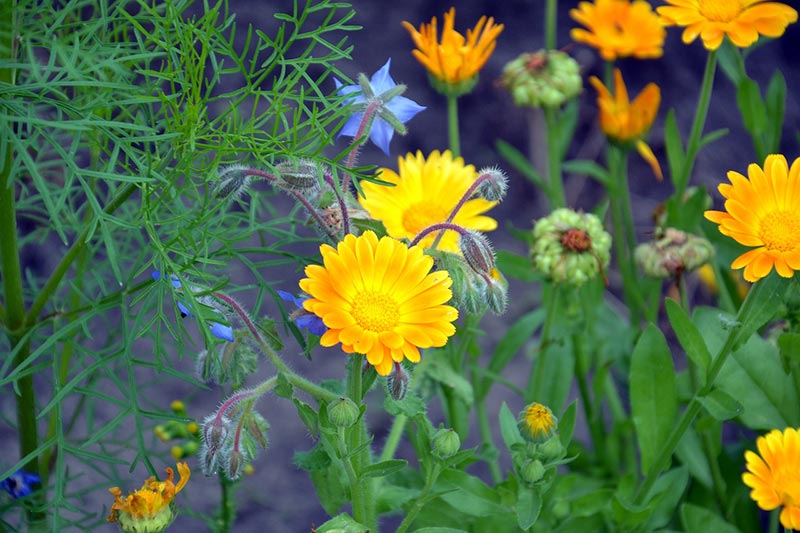
| USDA Hardiness Region: | 2–11 |
| Sun: | Full sun/partial shade |
| Soil: | Rich in organic matter, well-draining |
Calendulas are small plants native to North Africa and Eurasia. Depending on your location, you can grow them as annual or perennial plants. Calendulas are only about 27 inches high, but these flowers are true showstoppers regardless of their size. They have bright yellow or orange flowers with colorful central disks. These plants grow best in full sun to partial shade and need well-draining soil rich in organic matter.
They are excellent at attracting ladybugs, which is beneficial for your garden. However, they require more frequent watering, which makes them slightly high-maintenance.
- Colorful flowers
- Excellent at attracting ladybugs
- Fairly high-maintenance
3. Bachelor’s Button
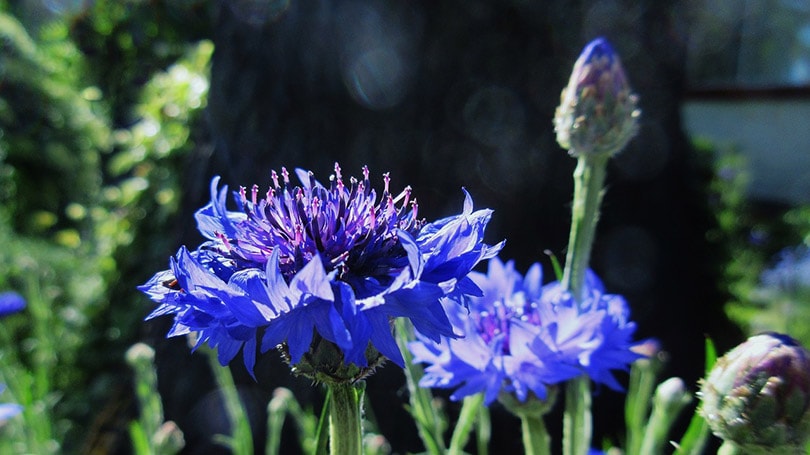
| USDA Hardiness Region: | 2–11 |
| Sun: | Full sun |
| Soil: | Sandy, loamy, well-draining |
The bachelor’s button is an annual plant native to Europe. It grows best in full sun and is also known as the cornflower plant. You can easily recognize bachelor’s button flowers as they are typically deep purple, although they can be blue, pink, white, or even black. These plants can reach up to 3 feet and need sandy, loamy, well-draining soil to prosper. The bachelor’s button would be the perfect plant if you want to attract ladybugs to your garden.
However, this plant is self-seeding, meaning it can easily overspread, which requires you to deadhead them.
- Stunning flowers
- Attracts ladybugs
- Could easily overspread
- Requires deadheading
4. Dill
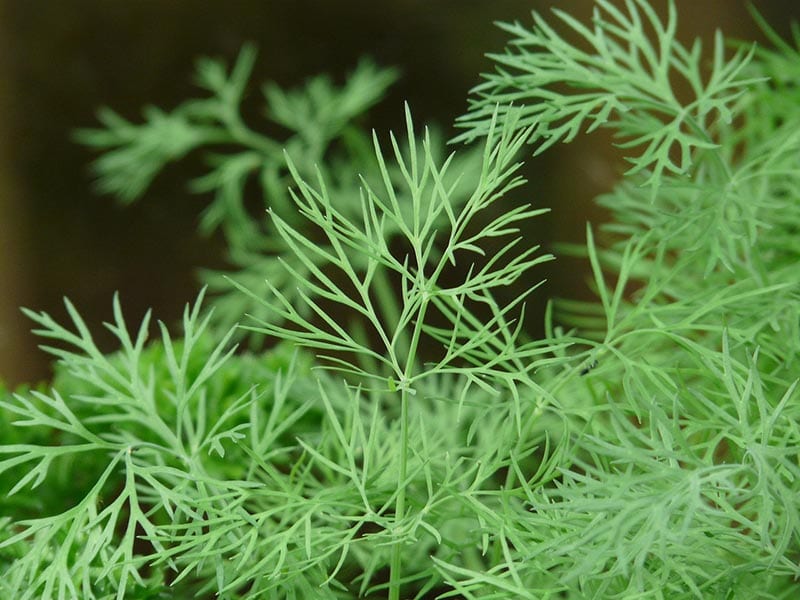
| USDA Hardiness Region: | 3–11 |
| Sun: | Full sun/partial shade |
| Soil: | Well-draining, rich in organic matter, slightly acidic |
Dill is an annual aromatic herb people mainly use in cooking. The plant is typically quite high and can reach over 5 feet bearing small yellow flowers that attract various positive insects. Dill typically prosper in locations that receive full sun to partial shade and need well-draining, slightly acidic soil rich in organic matter.
Some species of dill may overspread in your garden, so it’s important to prevent overspreading. However, it’s still a useful herb which is why many grow it in their gardens.
- Attracts positive insects, including ladybugs
- Could overspread in your garden
5. Azalea
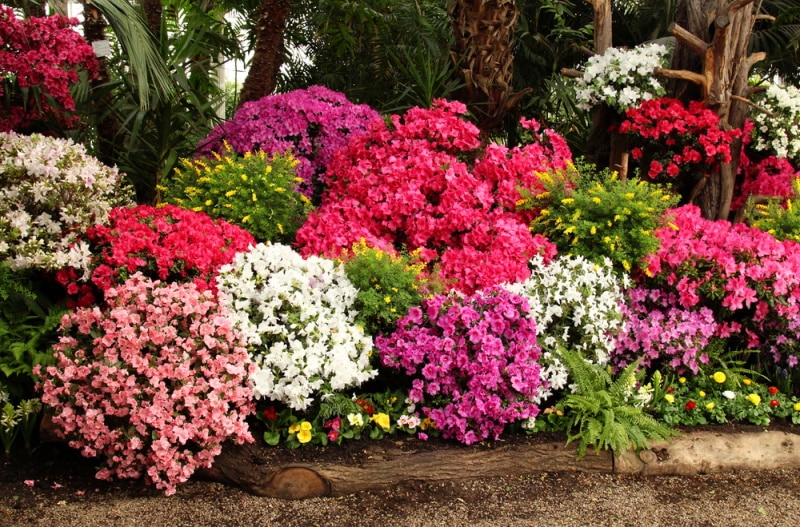
| USDA Hardiness Region: | 4–9 |
| Sun: | Partial shade |
| Soil: | Well-draining, acidic |
Azaleas are typically grown as ornamental plants due to their charming, colorful flowers. They are native to North America and Asia and are popular garden flowers worldwide. Their flowers are funnel-shaped, typically pinkish-white in color, and attract ladybugs and other positive insects. Depending on your azalea variety, you can expect your plants to be anywhere from 2 to 6 feet high.
These plants grow best in partial shade and in well-draining, acidic soil. They are typically easy to take care of but require regular pruning.
- Colorful, charming flowers
- Attract ladybugs and other positive insects
- Require regular pruning
6. Marigold
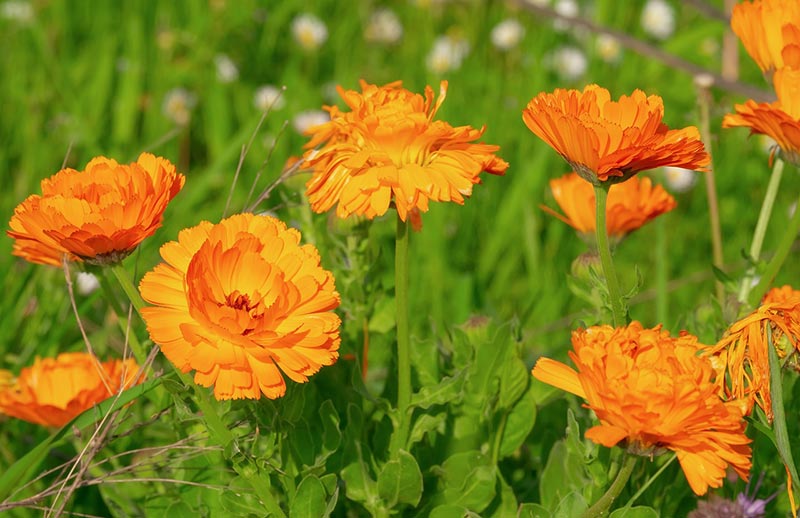
| USDA Hardiness Region: | 2–11 |
| Sun: | Full sun/partial shade |
| Soil: | Well-draining, loamy, rich in organic matter |
Marigold is an annual or perennial plant that’s easy to grow. It produces stunning, colorful orange-yellow flowers that will make any garden vivid and bright. These plants thrive in full sun but can do well in partial shade, and they need loamy, well-draining soil, with high concentrations of organic matter. Depending on your marigold variety, you can expect the plants to be from a couple of inches high up to 3 feet.
Some species are drought tolerant, while others are water tolerant, but they all attract various insects, including ladybugs. The only downside to growing marigolds is you need to deadhead them, which can be exhausting.
- Vivid, bright flowers
- Attracts various insects
- Drought-tolerant
- Water-tolerant
- Need deadheading
7. Angelica
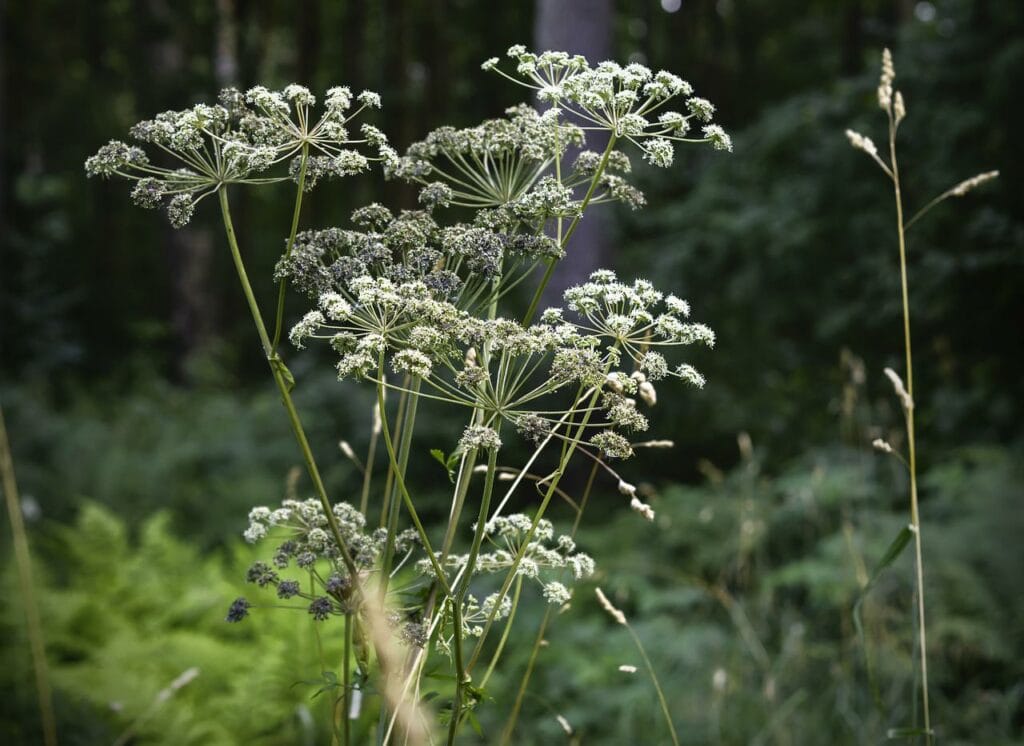
| USDA Hardiness Region: | 4–9 |
| Sun: | Full sun/partial shade |
| Soil: | Moist, rich in organic matter |
Angelicas are aromatic herbs grown as perennial and biennial plants. These plants are quite tall and can reach over 9 feet, bearing small yellow or white flowers, which will allure many insects, including ladybugs to your garden. They prosper in moist soil, are rich in organic matter, and need full sun to partial shade to thrive.
As angelica needs moist soil, it’ll require more frequent watering, but you can add mulch to decrease the need for water.
- Attracts beneficial insects
- Produces lovely flowers
- Needs frequent watering
8. Sweet Alyssum
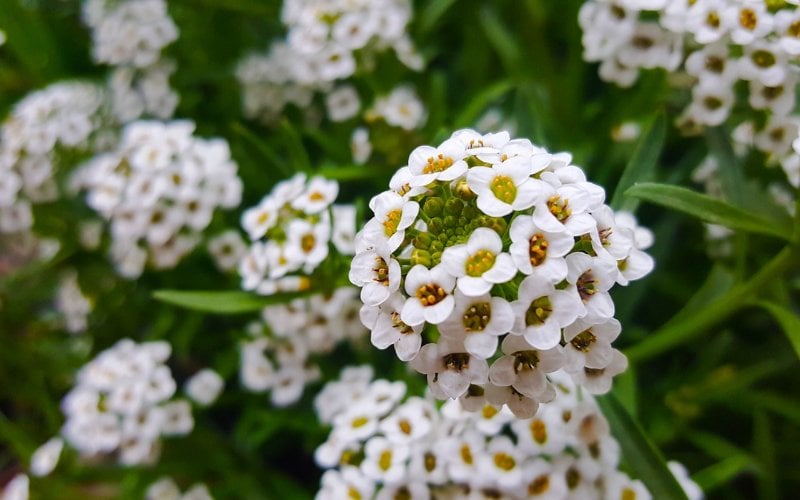
| USDA Hardiness Region: | 2–11 |
| Sun: | Full sun/partial shade |
| Soil: | Well-draining, moist |
The sweet alyssum is a hardy, annual plant native to the Mediterranean. It’s a low-maintenance perennial, so even beginner gardeners can grow it in their gardens. These plants are commonly just a couple of inches tall and they require full sun to partial shade to thrive. While they’re not picky about their soil, it should be moist and well-draining.
The sweet alyssum is prone to pests, but, like other plants on our list, they are great for attracting ladybugs, which prevents pest issues.
- Hardy
- Not picky about their soil
- Attracts ladybugs
- Prone to pests
9. Dandelion
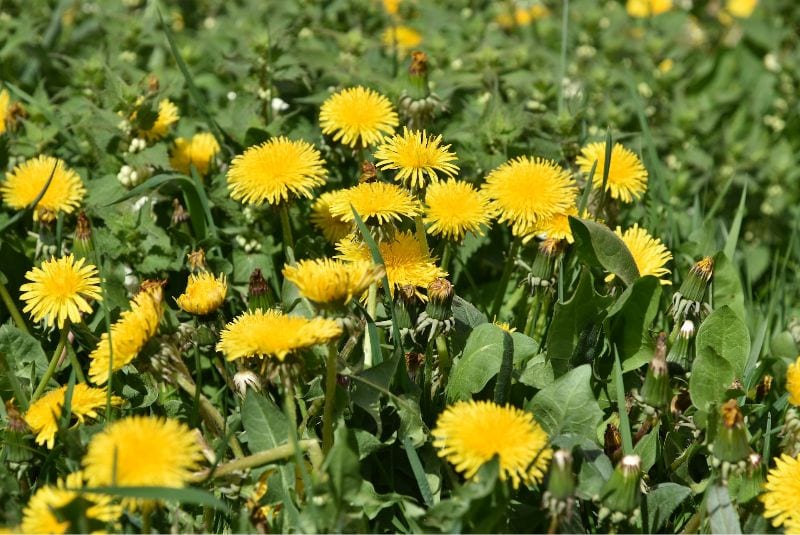
| USDA Hardiness Region: | 3–9 |
| Sun: | Full sun/partial shade |
| Soil: | Rich in organic matter, slightly acidic |
Dandelions are perennial plants that produce stunning yellow flowers. While many grow dandelions for their aesthetic appearance, others also use these plants in cooking as almost all parts are edible. Dandelions are typically small in size and only grow about 20 to 30 inches high. They attract all kinds of insects, from ladybugs to bees which are beneficial for pollination and fighting pests.
These plants are prone to pests, but the pest issues are typically easily manageable.
- Stunning flowers
- Edible plant
- Attracts all kinds of insects
- Prone to pests
10. Butterfly Weed
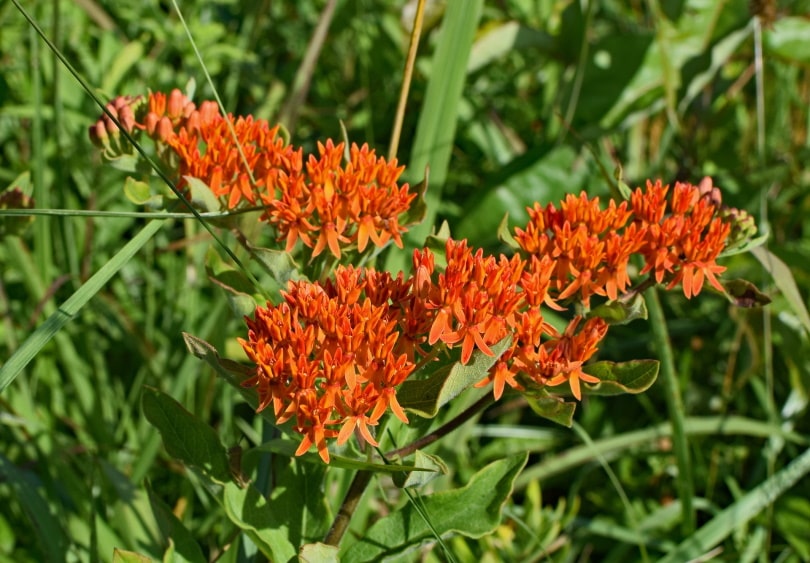
| USDA Hardiness Region: | 3–9 |
| Sun: | Full sun |
| Soil: | Well-draining |
Butterfly weed is a perennial plant with simple leaves and bright orange flowers. These plants are typically 2 feet high and require full sun to thrive. They are not needy when it comes to their soil preferences as long as the soil is well-draining. It’s an excellent plant for attracting ladybugs to your garden, although it’s susceptible to pests.
Butterfly weed doesn’t require much maintenance, so it’s perfect for people who want a beautiful garden without spending too much effort on its growth.
- Not needy about soil preferences
- Attracts ladybugs
- Low-maintenance
- Prone to pests
11. Orchid

| USDA Hardiness Region: | 6–11 |
| Sun: | Full sun/partial shade |
| Soil: | Slightly acidic, well-draining |
Orchids are stunning plants with tropical-looking flowers that vary in color from white to bright pink. These plants attract pollinators and other insects such as ladybugs to your garden. They need full sun to partial shade and slightly acidic, well-draining soil. Orchids are quite small in size, commonly just a couple of inches high.
However, that makes them great for small gardens and as companion plants. You’ll need to fertilize orchids frequently, but besides that, they don’t require much maintenance.
- Attracts pollinators and ladybugs
- Excellent for small gardens
- Good companion plants
- Require frequent fertilization
12. Gardenia
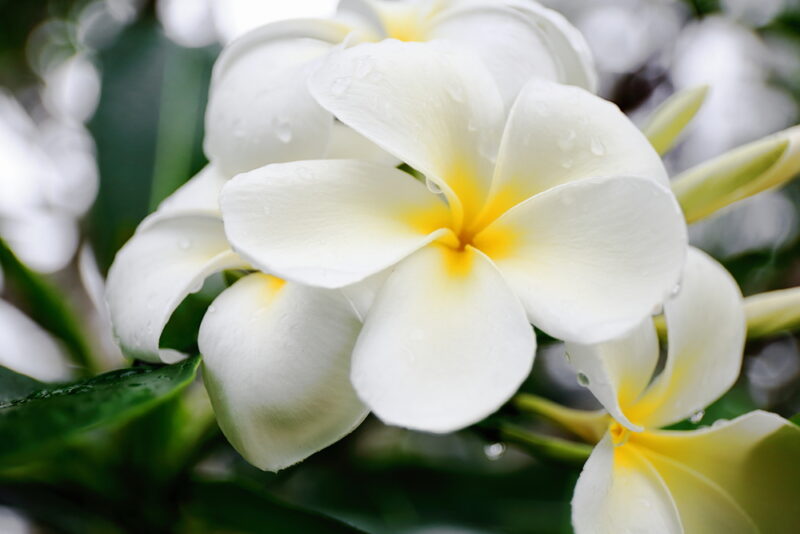
| USDA Hardiness Region: | 6–11 |
| Sun: | Full sun/partial shade |
| Soil: | Well-draining, rich in organic matter, acidic |
Gardenias are wonderful, evergreen shrubs that produce white decorative flowers. Typically, these plants are around 3 to 8 feet high and need full sun and partial shade to prosper. For the best-growing results, provide your gardenias with well-draining, acidic soil rich in organic matter. These plants are easy to care for but are susceptible to aphids and other pests.
However, gardenias will allure ladybugs into your garden, preventing the pests from spreading.
- Easy to maintain
- Wonderful flowers
- Attracts ladybugs
- Susceptible to aphids and other pests
13. Asparagus
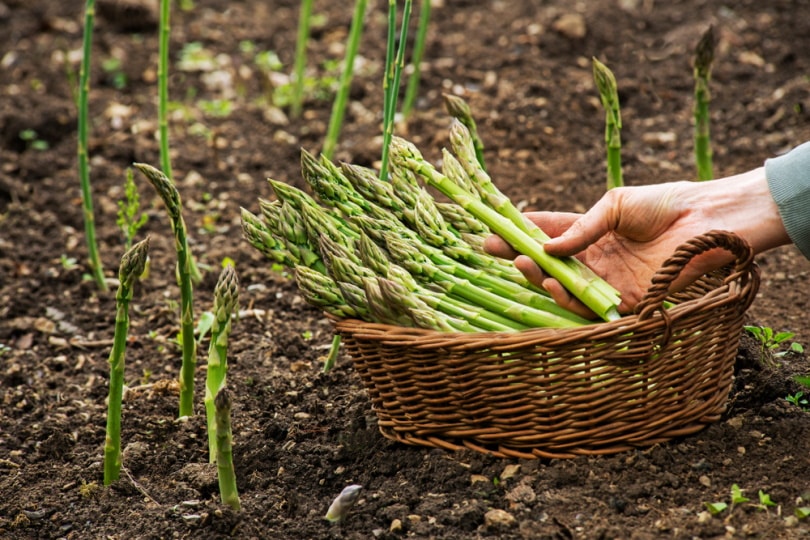
| USDA Hardiness Region: | 3–8 |
| Sun: | Full sun |
| Soil: | Well-draining, slightly acidic |
Asparagus is a delicious vegetable plant typically grown as a perennial. It prospers in well-draining, slightly acidic soil in locations that receive full sun. Its shoots are edible, so many grow asparagus in their gardens. If you take proper care of these plants, they can reach over 3 feet, and it’s typically harvest-ready 6 to 8 weeks after planting.
Like most veggies, asparagus is prone to pests. However, it attracts ladybugs who consume the pests and prevent health issues in your plants.
- Edible shoots
- Attracts ladybugs
- Prone to pests
14. Garlic
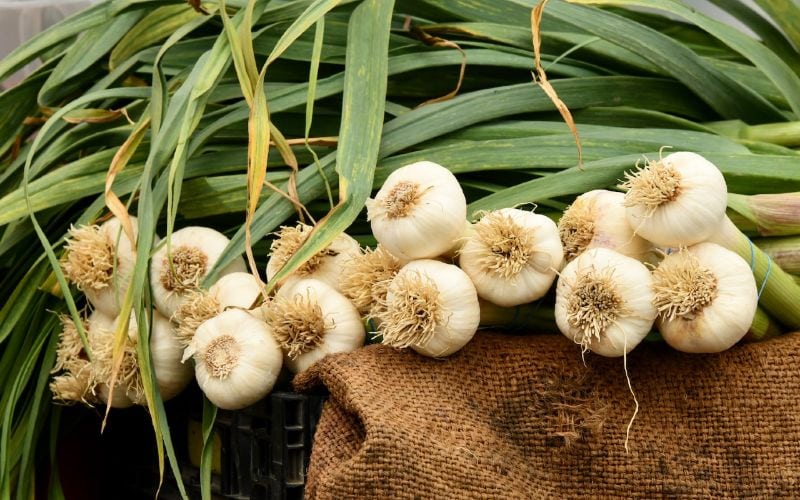
| USDA Hardiness Region: | 1–10 |
| Sun: | Full sun |
| Soil: | Well-draining, slightly acidic |
Garlic is a perennial plant, although most grow it as an annual. These plants produce edible bulbs many people use daily in their kitchens. You should typically plant garlic during fall in a location that receives full sun. The soil for garlic should be slightly acidic and well-draining. Garlic plants typically become around 2 feet high, although their size will vary depending on the variety you grow.
While they’re prone to pets like most veggies, garlic attracts insects which reduces pest problems.
- Tasty bulbs
- Attracts beneficial insects
- Prone to pests
15. Cabbage
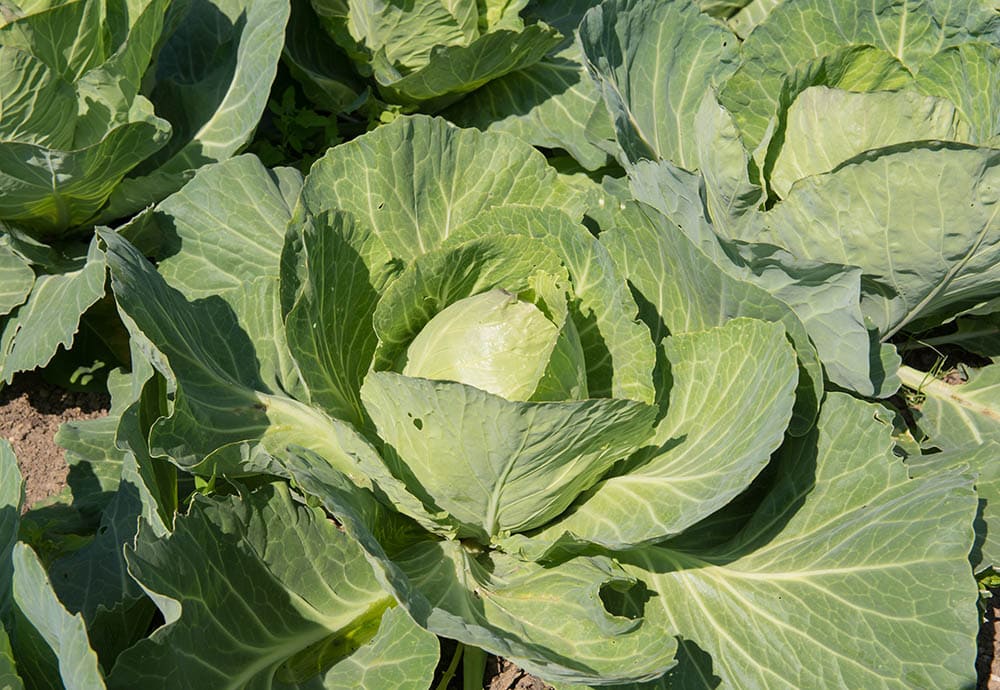
| USDA Hardiness Region: | 1–10 |
| Sun: | Full sun |
| Soil: | Well-draining, fertile, slightly acidic |
Cabbage is one of the most popular cool-season vegetables grown in the USA. People love these plants for their taste, as they come in several varieties with unique flavors. Cabbage plants need full sun and fertile-well-draining soil, preferably slightly acidic. They require fertilization, but with proper care, they’ll grow healthy and strong, becoming harvest-ready in about 4 to 6 months after planting.
Cabbage is susceptible to pests, but they attract ladybugs, which typically resolve pest problems.
- Tasty crops
- Attracts ladybugs
- Require fertilization
- Susceptible to pests
16. Beans
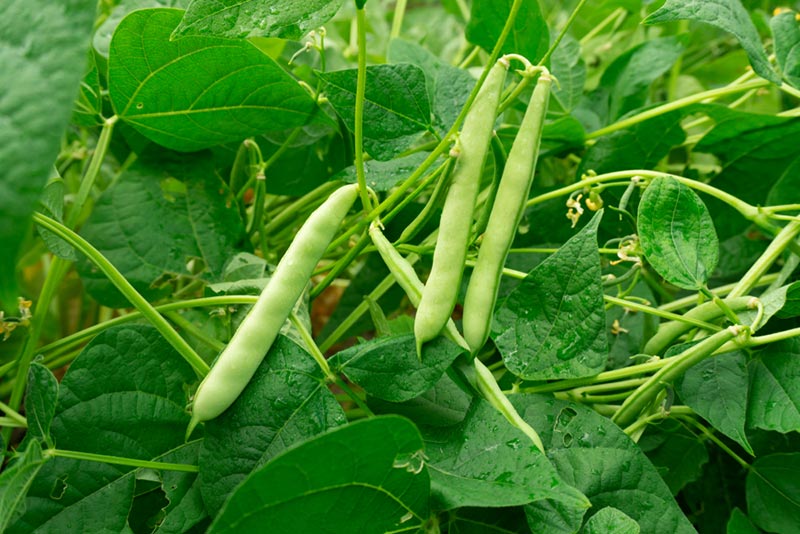
| USDA Hardiness Region: | 2–11 |
| Sun: | Full sun |
| Soil: | Clay, loamy, slightly acidic, well-draining |
Beans are vegetables rich in nutrients, which is why many people grow them in their gardens. They need full sun to grow, and they thrive the best in clay or loamy soil that’s well-draining and slightly acidic. These plants grow compactly and can reach between 2 and 15 feet in height, but they require support from a trellis.
Regardless of the bean variety you grow, it will need frequent fertilization to prosper, so many consider these plants hard to grow. However, they will attract ladybugs to your garden.
- Delicious veggies
- Attract ladybugs
- Hard to grow
- Prone to diseases and pests
- Needs lots of fertilizer
17. Tomatoes
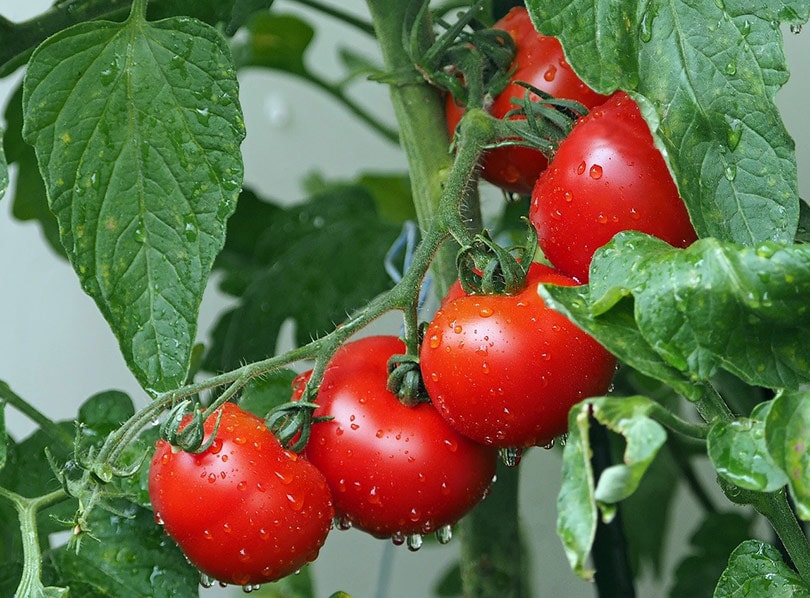
| USDA Hardiness Region: | 2–10 |
| Sun: | Full sun |
| Soil: | Well-draining, slightly acidic |
While tomatoes are technically fruits, we listed them as vegetables as that’s how they’re mainly categorized due to their nutritive values. Tomato plants need full sun and slightly acidic soil to thrive, and they can reach over 10 feet with proper care. These plants produce tasty, red fruits commonly used in salads and cooking in general.
Tomato plants have various benefits, as they’re fast-growing, easy to maintain, and attract beneficial insects. However, they are prone to diseases and pests, which could endanger your yields.
- Tasty fruits
- Easy to maintain
- Fast-growing
- Attract ladybugs and beneficial insects
- Prone to pests and diseases
18. Strawberries

| USDA Hardiness Region: | 5–10 |
| Sun: | Full sun |
| Soil: | Sandy, loamy, rich in organic matter |
Strawberries are low-growing plants that bear tasty, sweet fruits from June to July. They have small, compact leaves with white flowers. There are various strawberry species available and all of them require full sun to thrive. While they can adapt to any kind of soil, they prefer sandy and loamy soils with high organic matter concentrations. Strawberries are excellent for attracting ladybugs, especially since they’re prone to pests that ladybugs love to eat.
- Can adapt to any kind of soil
- Attract positive insects
- Prone to pests
19. Grapes
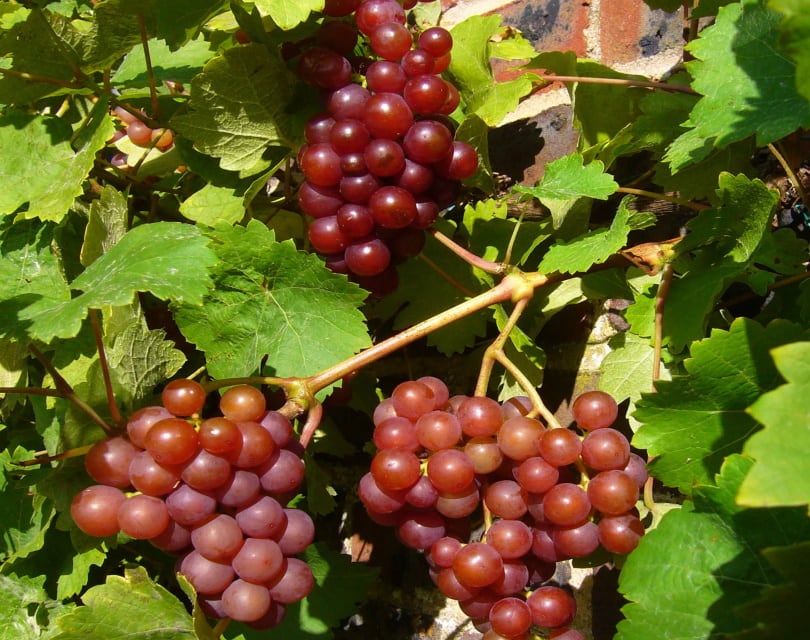
| USDA Hardiness Region: | 4–10 |
| Sun: | Full sun |
| Soil: | Well-draining, loamy |
Grapes are perennial bushes that typically require a trellis to spread their vines. There are a bunch of different grape species, and all produce tasty, juicy fruits. Grapes require locations with full sun and well-draining, loamy soil to grow healthy and strong. While they are prone to pests and diseases, they also attract positive insects that help fight these issues.
With proper care and support, some grape species can reach over 30 feet in height.
- Various species
- Tasty, juicy fruits
- Attract positive insects
- Prone to pests and diseases
20. Pineapple
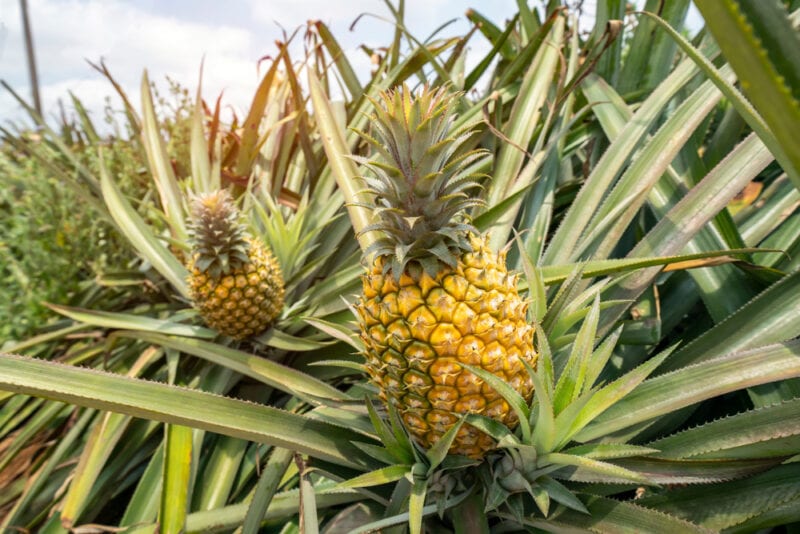
| USDA Hardiness Region: | 9–11 |
| Sun: | Full sun/partial shade |
| Soil: | Loamy, sandy, well-draining |
Pineapple is a tropical, perennial plant that grows large, tasty, oval fruits. Typically, pineapple trees can be over 6 feet tall, and they produce extravagant pink flowers while blooming. These plants attract butterflies, ladybugs, bees, and other beneficial garden insects. As pineapples are tropical plants, you can’t grow them in USDA Hardiness Regions below 9.
However, if you live in a warmer climate, this is an excellent plant option as it looks beautiful and bears nutritious fruits.
- Tasty fruits
- Attract beneficial garden insects
- Not suitable for USDA Hardiness Regions below 9
Conclusion
Many plants from flowers to fruits and veggies will attract an array of positive insects, as well as ladybugs to your garden. These tiny creatures are beneficial for every garden, and while other insects will help with pollination, ladybugs will fight pests and prevent diseases. All you need to do is plant one of the plants from our list and watch your garden become a ladybug haven.
Featured Image Credit: pixabay, Pexels
Contents
